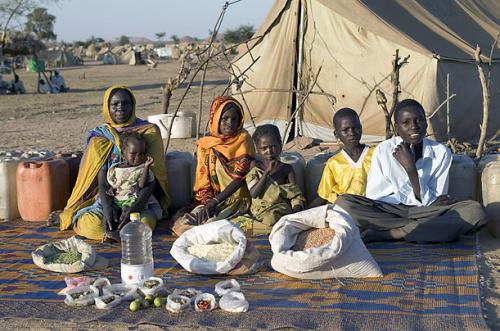Developing Countries
Among other maladies, developing countries suffer from poor sanitation, nutrition, and education. Although OLPC focuses specifically on education, it is worthwhile to realize the general context in which the specific issue of education resides.
Sanitation
In 2004, 2.6 billion people, or more than 40% of the world's population, did not have access to basic sanitation. In Kevin Watkins' (head of the United Nations Development Program) words, "'No access to sanitation' is a polite way of saying that people draw water for drinking, cooking and washing from rivers, lakes, ditches and drains fouled with human and animal excrement. Over one billion people drink unsafe water, and the poor sanitation causes 4000 children each day and contributing to 10 million child deaths each year. 1.8 million children die each year from diarrhea, the second largest cause of global children mortality.
According to the 2006 Human Development Report, of which Watkins was the principal author, a child has a 60% better chance of reaching one year of age if a toilet is installed at home. As UNICEF's Executive Director Carol Bellamy states, "children are being born into a silent emergency of simple needs" and the disparity between the developed and developing world must be addressed.
Hunger
Food represents yet another basic necessity. It is neither unreasonable
nor is it novel, but nearly 16,000 children die from hunger-related
causes each day. These deaths account for one third of child deaths
around the world. Unfortunately, the damage sustained in the womb and
during early childhood are not easily reversed, and children suffer the
effects of undernourishment as they grow into adults. The number of
deaths from child undernourishment could be decreased by 25% if pregnant
women were given zinc and vitamin A supplements and new mothers breastfed for
at least the first 6 months of the babies' lives.
This figure shows the percentage of undernourished people around the world. Not surprisingly, developing countries have alarmingly high percentages, while developed countries do not. The world is in a tragic situation where the developing world suffers from under-nourishment while the developed world lounges in over-nourishment. Photographer Peter Menzel travelled around the world and took photographs of the food that one family would eat in one week. Below are the photographs that he took and published in his book "Hungry Planet: What the World Eats".



Education
As with sanitation and nutrition, developing countries lack in the
education sector. One in five children do not attend school. For those
that can attend 4 - 6 years of school, 30 - 50% cannot read or write.
In September 2001, there were 1 billion non-literate adults, which is
equivalent to 26% of the world adult population. 98% of nonliterates
live in developing countries, and 2/3 of non-literates are women. OLPC
seeks to provide children with a learning and teaching tool that can be
used anywhere in the world around them.
By making learning fun and accessible, the OLPC intends to improve education
and empower people. Although education is a serious issue, people often raise
the question whether education is even worth improving, when compared with the
struggle to survive. Such a viewpoint proposes that the world should only
concentrate on one specific aspect, but the plight of developing countries is
a complex one, and so it should be addressed from different angles and in
every way possible.
